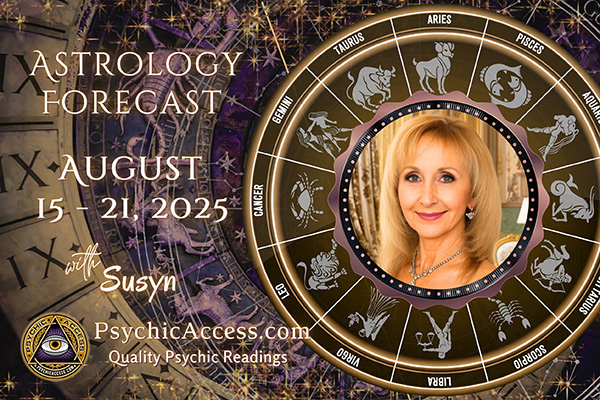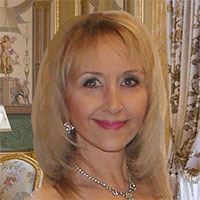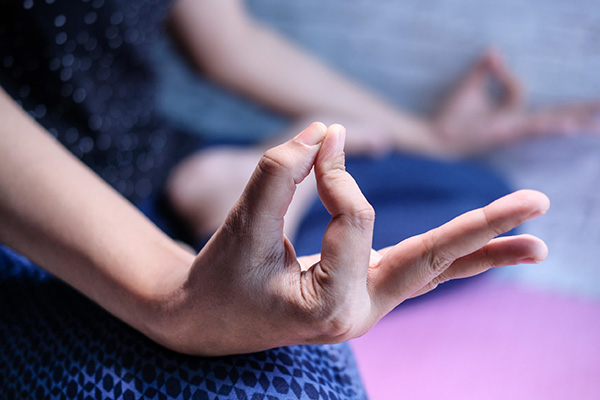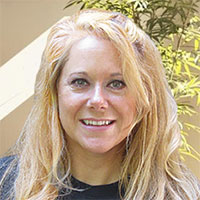Weekly Astrology Outlook for September 15 – 21, 2025
 The week opens with the Moon gliding through the sensitive sign of Cancer, encouraging us to tap into emotional currents and intuitive insights. This energy may not lend itself to high productivity or major launches, but it creates an ideal atmosphere for contemplation, connection, and personal recalibration. You may notice an increased sensitivity to the needs of those around you or find solace in familiar surroundings and faces. The flow of the day aligns best when you yield to it, rather than attempting to push through obstacles.
The week opens with the Moon gliding through the sensitive sign of Cancer, encouraging us to tap into emotional currents and intuitive insights. This energy may not lend itself to high productivity or major launches, but it creates an ideal atmosphere for contemplation, connection, and personal recalibration. You may notice an increased sensitivity to the needs of those around you or find solace in familiar surroundings and faces. The flow of the day aligns best when you yield to it, rather than attempting to push through obstacles.
The morning brings a creative Quintile between the Moon and Chiron in Aries, illuminating the delicate process of emotional healing. Old wounds may resurface, not to overwhelm you but to spark compassion and closure. There’s an opportunity for significant realizations if you take a moment to listen.
As the afternoon progresses, the Sun in Virgo forms a gentle Quintile with the Moon, smoothly bridging the rational mind with the emotional realm, facilitating the alignment of intentions with inner truths. This presents a lovely chance for small, grounded acts of service to transform into healing rituals. Whether you’re tidying up a space, nourishing your body, or reaching out to a loved one, every action carries energetic significance today.
Let today be one where gentleness prevails. If you find yourself distracted or overly emotional, recognize it as part of your journey. Cancer energy teaches us that nurturing our inner world is equally essential as achieving external goals. Allow yourself the grace to rest, reconnect, and rejuvenate. The week is just beginning, and your spirit deserves a serene foundation.
Tuesday, September 16: Emotional Expansion
Tuesday heightens the emotional currents but amplifies them significantly. The Moon remains in Cancer, intensifying our emotions through a conjunction with Jupiter in the same sign. An overflow of compassion, optimism, and heartfelt generosity can brighten your day or deepen connections. Concurrently, the Moon trines Lilith in Scorpio, activating your inner voice. However, expect some turbulence. Mars in Libra clashes with Chiron in Aries mid-morning, stirring up friction between your desire for peace and the raw intensity of emotional exposure. The evening presents challenging aspects involving the Moon, Chiron, and Mars. Tempers might flare, or old insecurities could re-emerge. Allow today to be about maintaining openness while preserving your composure. Embrace your feelings but stay anchored in kindness.
Wednesday, September 17: Confident Flow
As the Moon enters Leo, the emotional fog starts to dissipate. A renewed sense of direction fills the air, bringing back confidence. Leo energy exudes warmth, charm, and the bravery to occupy space. Nonetheless, a cosmic tension brews between Mercury in Virgo and Saturn in Pisces. Your intellect may want to analyze or solve issues, while your intuition might suggest something different. If uncertainty arises or plans hit obstacles, view it as a cue to pause rather than panic. You are learning to trust your inner voice, even when it trembles. Let today be a chance to act from your heart while respecting your growing wisdom.
Thursday, September 18: Harmonizing Thoughts
A beautiful change occurs as Mercury transitions into Libra early in the day, infusing communication with grace, tact, and a sense of balance. It’s a refreshing shift after the previous day’s heaviness. The Leo Moon continues to illuminate the skies, promoting self-expression and creativity. However, emotional tides still run deep. As the Moon forms quincunxes and squares with the Nodes and Lilith, questions about your identity versus societal expectations may arise. Later, the Sun in Virgo subtly aligns with Chiron, underscoring that healing often demands uncomfortable adaptations. Speak with purpose, listen with compassion, and let the day guide you back to a harmonious state.
Friday, September 19: Practical Realignment
Virgo takes center stage today as both the Moon and Venus move into this grounded, detail-oriented sign. You might feel an impulse to clean, organize, or impose order on some aspect of your life. This isn’t merely about tidying up your space; it involves refining your values and deciding where to direct your affection and effort. However, the start of the day may bring some tension as the Moon interacts with Neptune, Uranus, and Pluto through a series of minor aspects. Plans may need adjustments, emotions could scatter, or hidden elements may come into view. Trust your intuition and let simplicity serve as your guide. Today is about alignment, not perfection.
Saturday, September 20: Surprise Adjustments
Venus in Virgo makes two striking connections today, potentially leading to unexpected shifts. Initially, she squares Uranus in Gemini, hinting at sudden insights regarding love, finances, or personal style. You might feel a call to break free from routines or question outdated ideals. Later, Venus forms a quincunx with Pluto, stirring deeper emotions just beneath the surface. A casual remark or small interaction could unveil a significant truth. Relationships may take on a destined or transformative vibe, even subtly. Trust what emerges, even if it disrupts your plans. The universe is subtly fine-tuning your path through these small, unexpected shifts.
Sunday, September 21: New Seeds
A transformative New Moon Solar Eclipse in Virgo arrives this afternoon, presenting a powerful chance for renewal. This isn’t just another New Moon; it acts as a cosmic portal. The days leading up may have triggered doubt or emotional turmoil, especially with the Moon’s quincunx to Chiron earlier and its opposition to Saturn by early afternoon. However, as the Sun and Moon unite at Virgo’s final degree, a new door opens. This is the moment to plant the seeds of lasting change, particularly concerning well-being, daily habits, service, and self-worth. Concentrate on the particulars that will bolster your aspirations. The little steps taken now will resonate throughout the next six months and beyond. This is sacred terrain—nurture it with clarity and care.
* All aspect and transit times are in Eastern Time (New York City, NY, USA). Please adjust accordingly for your local time zone.
|
Residing in New Mexico, Susyn offers Psychic Guidance, Astrological Insights, and Channeled Messages that can transform your life! Her impressive credentials include a doctorate in metaphysical studies and certifications from The American Association of Professional Psychics and The American Tarot Guild. As a published author with two metaphysical books and numerous articles and horoscopes, Susyn enhances her readings with mentorship, teaching others to harness their gifts, elevate their vibrations, and empower themselves. A popular guest on various radio shows, she has hosted her own as well. If you seek one of the truly brilliant stars who can read them with exceptional accuracy, look no further. You can connect with Susyn at PsychicAccess.com. |
As we step into the third week of September 2025, the universe is alive with energy and enthusiasm. This week’s astrological forecast hints at a blend of challenges and chances for every zodiac sign. From potent planetary alignments to notable celestial shifts, there’s much to anticipate in the coming days.
On Monday, September 15, the week launches energetically as the Sun in Virgo harmonizes with Pluto in Capricorn. This dynamic aspect ushers in a feeling of empowerment and transformation, making it an ideal moment to set intentions and actively pursue your goals. Tap into this energy to explore your passions and enact positive changes in your life.
In the middle of the week, on Wednesday, September 17, Mercury in Libra encounters Jupiter in Capricorn in a square. This aspect may lead to clashes between logic and hope, possibly causing misunderstandings or communication breakdowns. Be cautious with your words and actions, striving to balance realism with optimism as you confront obstacles.
On Friday, September 19, Venus in Leo forms a trine with Uranus in Taurus, inviting surprising developments and joy in love and relationships. This is a perfect time for trying something novel in your romantic endeavors. Embrace spontaneity and remain open to new experiences that could bring about beneficial shifts in your personal connections.
As we approach the weekend, a Full Moon in Pisces on Sunday, September 21, encourages emotional release and spiritual growth. This powerful moment allows you to shed emotional burdens and concentrate on self-care and healing. Reflect on your aspirations and intuition, trusting the universe to guide you toward your highest good.
Overall, this week’s astrological forecast is charged with vibrant energy and the promise of growth. Seize the opportunities that present themselves, remain open to new horizons, and trust in the wisdom of the cosmos to navigate your path. Stay grounded and steady amidst any challenges, knowing that the universe is supporting you. Enjoy the adventure that lies ahead! Continue reading











